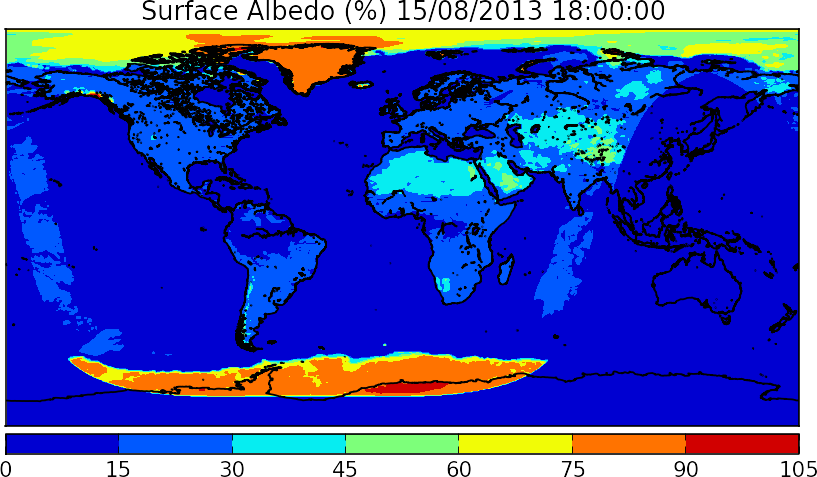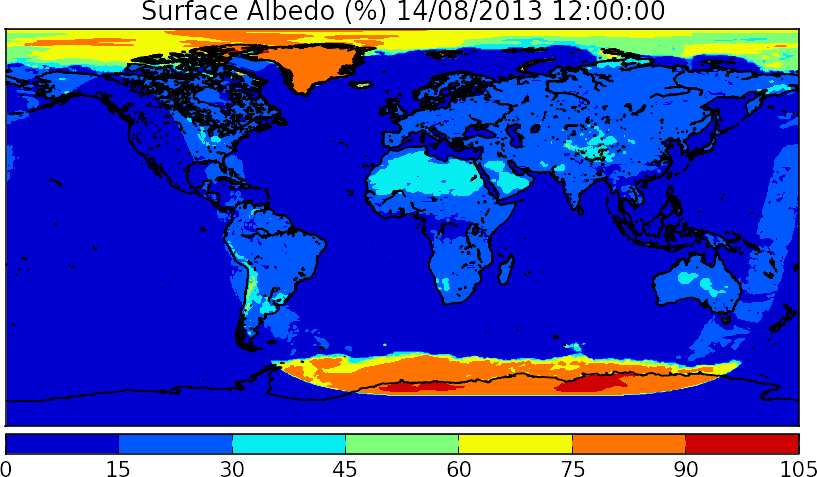2nd Copenhagen Quiz

This figure shows global Earth Albedo (%) for August 15th, 2013 (Time is given in UTC).
Albedo is the amount of radiation sent by the Earth back to space.
It is now time for the 2nd and last quiz from Copenhagen, dedicated to our final project.
If you recall our previous post about climate modeling, it introduced some figures of observed climate data.

This figure shows global Earth Albedo (%) for August 14th, 2013 (Time is given in UTC).
Albedo is the amount of radiation sent by the Earth back to space.
A precise definition of Albedo can be found here.
Now, inspecting the figure above, we can distinguish some very interesting phenomena to observe (we noticed at least 4).
So, the question to you is to identify them and send as comments.
Hope you’ll find why Earth physics is so cool!
And yes, official answers will be given by next week.

So, it is now time for the answers we promised.
Seems like this one was harder than before, or everyone was busy with the final report :).
Albedo is a measure for the fraction of radiation emitted from the Earth back to space compared to the radiation received by the sun (as the strongest energy source around…)
With the figure above, you may notice:
1. Oceans absorb most of the energy from the sun, like a sink.
2. The lands does emit radiation back in about 30%.
3. Clouds can be a good source for high albedo, blocking the radiation from reaching the Earth surface.
4. The same is true for ice, especially in the poles (notice the high albedo there).
5. The transition between day/night zones on the Earth, if you follow the curved stripe going through Antarctica.
6. In some areas, the albedo is over 100%. How can that be possible? Well, probably there is some heat generated at that point, causing more energy to emit than received.
7. There is a close relation between hot zones and higher albedo over the land, as can be noticed in north Africa, California, Saudi-Arabia and central Asia.
Good luck!
Moti.